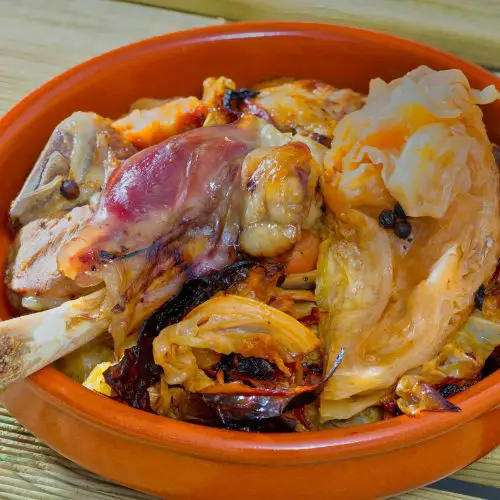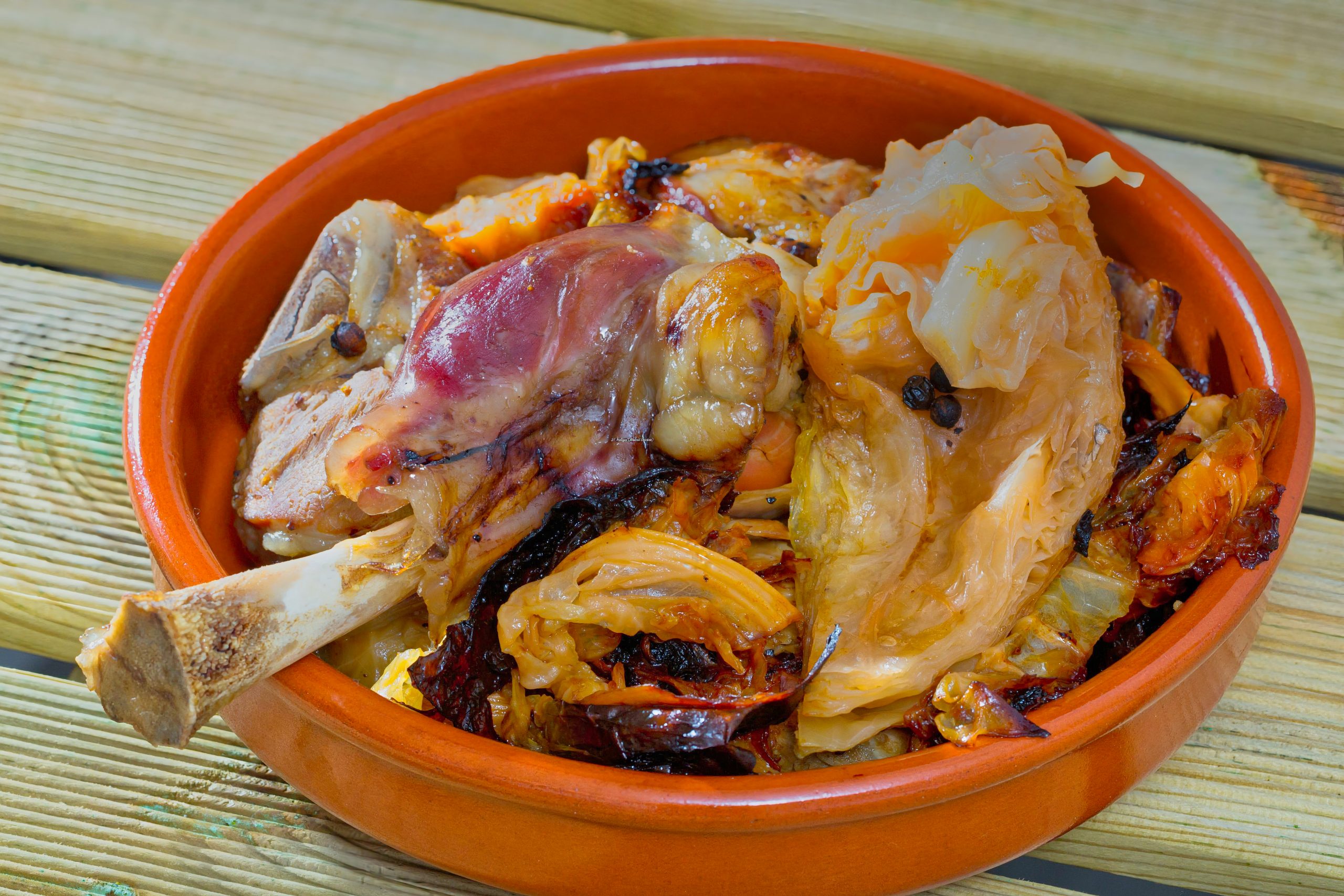
The Norwegian Farikal Recipe is a traditional dish that originates from Norway. It is made using lamb meat and cabbage, with additional ingredients like salt and black pepper to enhance the flavors. The dish is prepared by simmering the meat and cabbage together until they are tender and infused with the rich flavors of the broth.
Want more ideas to round-out your Norwegian Recipe Box?
A lot of great options are in these posts!
One of the notable characteristics of the Norwegian Farikal Recipe is its simplicity. It doesn’t require elaborate techniques or a long list of ingredients. This makes it a great option for those who prefer straightforward recipes that don’t compromise on taste.
You May Want to Join The World Recipes With Our Big Escape
Share your own recipes in our Facebook Group. Find recipes from all over the world. Learn more about International Cuisine and how you can surprise your family with new and exciting foods from all over the world.
For More Photos Visit Our Instagram at World Recipes Daily
The dish offers a unique combination of flavors, with the tender lamb meat providing a savory taste that complements the slight bitterness of the cabbage. The slow cooking process allows the flavors to meld together, resulting in a comforting and satisfying meal.
In terms of versatility, the Norwegian Farikal Recipe can be enjoyed as a standalone main course or paired with sides such as potatoes or flatbread. Its flavors are robust enough to stand on their own, but also versatile enough to be adapted to personal preferences or dietary restrictions.
From a nutritional standpoint, the Norwegian Farikal Recipe offers a good balance of protein from the lamb meat and essential vitamins and minerals from the cabbage. Lamb meat is a rich source of high-quality protein, while cabbage provides dietary fiber and various nutrients, such as vitamin C and vitamin K.
The Norwegian Farikal Recipe is a delightful and nourishing dish that brings together the flavors of lamb meat and cabbage in a simple yet satisfying way. Whether you’re looking for a traditional Norwegian meal or exploring new recipes, this dish is worth a try for its unique flavors and potential health benefits.
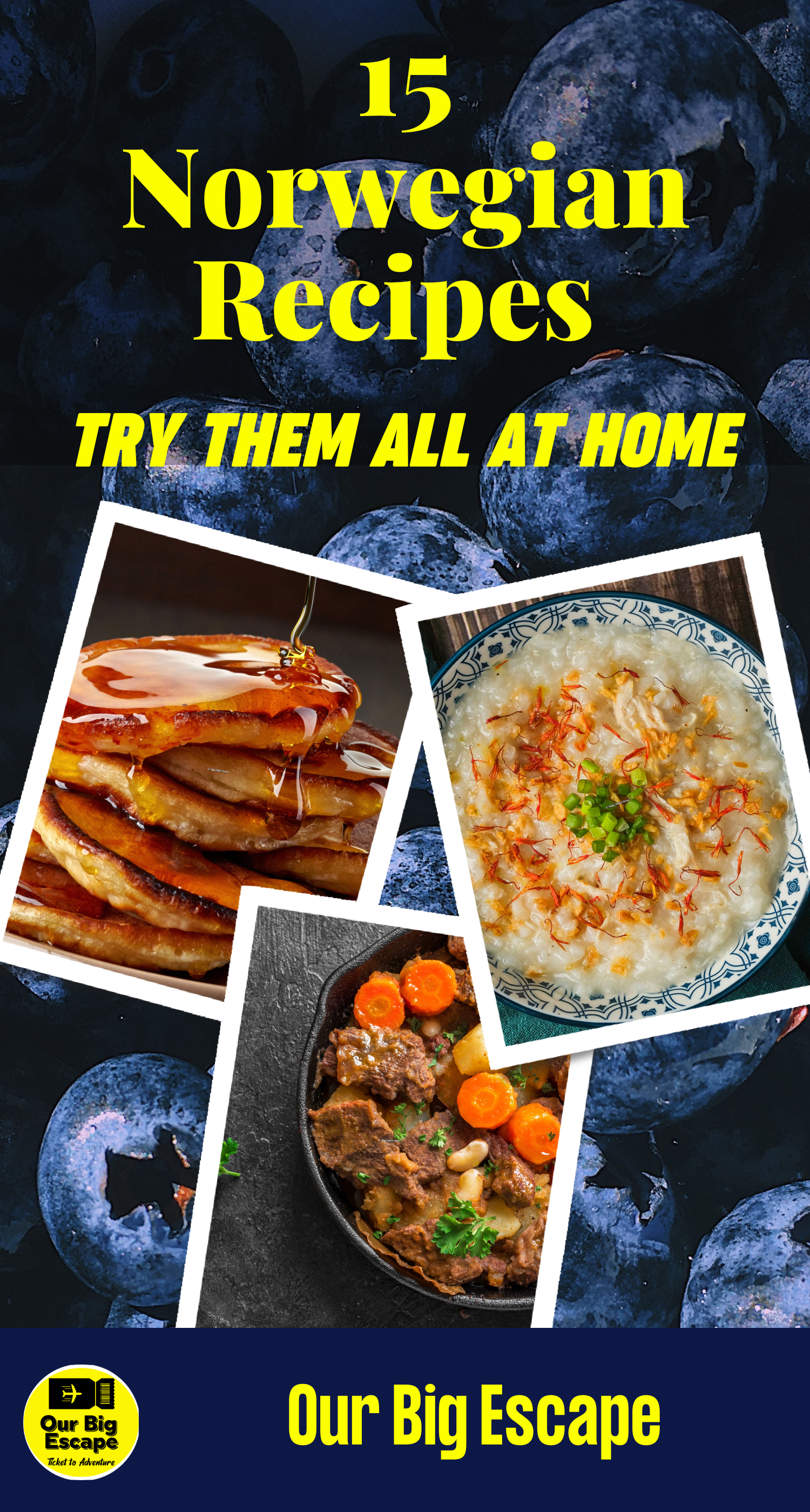
How To Make Our the Norwegian Farikal Recipe
Ingredients (8 Servings)
3 pounds lamb meat (such as lamb shoulder or lamb shanks)
2 cabbage large heads
2 teaspoons of salt
1 teaspoon of black pepper
Instructions
1. Preparation and Cooking Time Estimates:
Gather all ingredients and utensils.
2. Preparing the Lamb:
Rinse the lamb meat under cold water and pat it dry with paper towels.
Cut the lamb meat into chunks or pieces suitable for stewing.
Season the lamb meat with salt and black pepper, ensuring an even coating.
Allow the seasoned lamb meat to marinate for at least 30 minutes to enhance the flavors.
While the lamb marinates, move on to preparing the cabbage.
3. Preparing the Cabbage:
Remove any outer leaves from the cabbage heads and discard them.
Cut the cabbage heads into quarters and remove the tough core.
Slice the cabbage quarters into thin strips or shred them using a sharp knife or a mandoline slicer.
Rinse the shredded cabbage thoroughly under cold water to remove any dirt or debris.
Drain the cabbage well and set it aside for later use.
4. Layering the Lamb and Cabbage:
In a large, heavy-bottomed pot or Dutch oven, start by layering half of the shredded cabbage at the bottom.
Place the seasoned lamb meat on top of the cabbage layer, arranging it evenly.
Add the remaining shredded cabbage on top of the lamb meat, creating a second layer.
Press down lightly to compact the layers and ensure even cooking.
Cover the pot with a lid and move on to the next step.
5. Simmering the Farikal:
Place the pot on the stovetop over medium heat.
Allow the lamb and cabbage mixture to come to a gentle simmer.
Reduce the heat to low, maintaining a steady simmer throughout the cooking process.
Cover the pot and let the Farikal simmer for approximately 2 to 3 hours, or until the lamb is tender and the cabbage has softened.
Occasionally check and stir the Farikal gently to prevent sticking or burning.
If necessary, add a small amount of water or broth to the pot to maintain the desired consistency.
6. Serving the Norwegian Farikal:
Once the lamb is tender and the cabbage is cooked to your liking, remove the pot from the heat.
Allow the Farikal to rest for a few minutes before serving.
Using a slotted spoon, transfer the lamb and cabbage to a serving dish, allowing any excess liquid to drain off.
Serve the Norwegian Farikal hot as a main course, accompanied by traditional sides like boiled potatoes or flatbread.
Optionally, garnish the dish with fresh herbs such as parsley or dill for added flavor and visual appeal.
7. Enjoying the Norwegian Farikal:
Gather your family and friends around the table to enjoy this hearty Norwegian dish.
Share the rich flavors and comforting textures of the tender lamb and flavorful cabbage.
Discuss the cultural significance of the Norwegian Farikal, its traditional preparation, and any personal experiences or memories associated with it.
Appreciate the simplicity and nourishing qualities of this classic recipe.
Indulge in each bite, savoring the delightful combination of flavors and the warmth it brings to your mealtime.
Prep Time: 30 minutes to 1 hour
Cooking Time: 2 to 3 hours
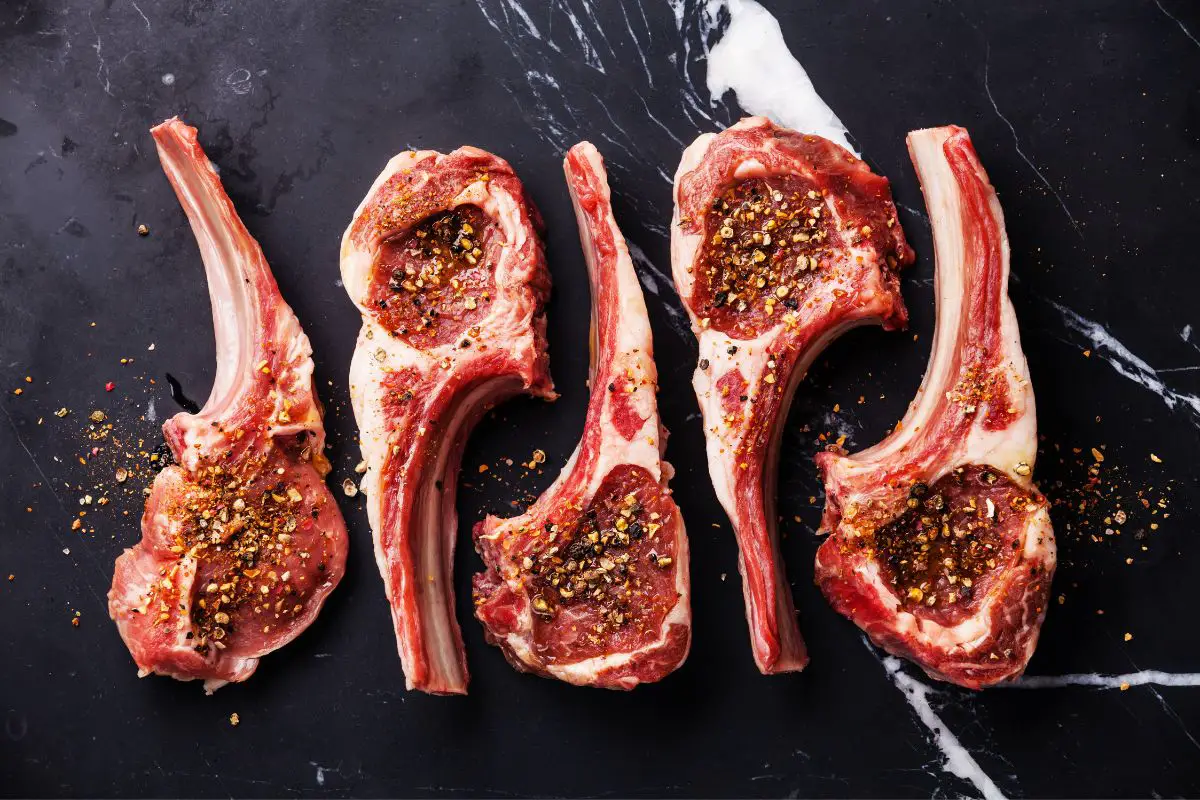
Pots, Pan and Cooking Equipment Needed for the Norwegian Farikal Recipe
Large, heavy-bottomed pot or Dutch oven: Used for simmering the Farikal.
Knife: For cutting the lamb meat and cabbage.
Cutting board: To provide a surface for slicing and chopping ingredients.
Slotted spoon: Used for transferring the lamb and cabbage from the pot to the serving dish.
Serving dish: For presenting the Norwegian Farikal.
Paper towels: To pat dry the lamb meat.
Measuring spoons: For accurately measuring salt and black pepper.
Mandoline slicer (optional): For shredding the cabbage into thin strips.
Best Way to Store Leftovers From the the Norwegian Farikal Recipe
a. Transfer the leftover Norwegian Farikal into an airtight container.
b. Allow the dish to cool down to room temperature before refrigerating.
c. Store the leftovers in the refrigerator within 2 hours of cooking to maintain freshness.
d. Use a container that is appropriately sized to hold the amount of leftovers without excessive empty space.
e. Label the container with the date and contents for easy identification in the refrigerator.
Tips and Tricks For Easier Creation
Choose lamb meat with a good amount of marbling for tender and flavorful results.
Cut the lamb meat into uniform pieces to ensure even cooking.
Use a sharp knife for slicing the cabbage to achieve thin and consistent strips.
Allow the lamb to marinate for a longer period, such as overnight, for enhanced flavors.
Stir the Farikal occasionally during simmering to prevent sticking or burning.
Adjust the seasoning according to personal taste preferences.
Consider using a slow cooker for a convenient and hands-off cooking experience.
Side Dishes and Desserts For the the Norwegian Farikal Recipe
a. Boiled potatoes: Serve them alongside the Farikal for a classic pairing.
b. Flatbread or lefse: These traditional Norwegian breads complement the flavors of the dish.
c. Pickled vegetables: Add some tanginess and acidity to the meal.
d. Lingonberry jam or cranberry sauce: Offer a touch of sweetness that balances the savory flavors.
How To Serve the Norwegian Farikal Recipe
a. Carefully transfer the cooked Farikal to a serving dish using a slotted spoon.
b. Arrange the lamb meat and cabbage in an appealing manner.
c. Serve the Farikal hot, allowing its comforting warmth to be enjoyed.
d. Garnish the dish with fresh herbs like parsley or dill for added freshness.
e. Provide serving utensils for guests to help themselves.
f. Share the cultural significance and history of the dish while serving.
g. Enjoy the Norwegian Farikal as a main course with the suggested side dishes for a complete meal experience.
Substitutions For the Norwegian Farikal Recipe
1. Vegan Options:
a. Substitute lamb meat with plant-based protein alternatives like tempeh or seitan.
b. Replace lamb broth with vegetable broth for a vegan-friendly base.
c. Use vegan butter or olive oil instead of traditional butter.
d. Swap out regular salt for sea salt or kosher salt in the Norwegian Farikal Recipe.
e. Use black salt (Kala Namak) to add an eggy flavor to the dish.
f. Opt for soy or almond milk instead of dairy milk if needed.
g. Garnish with fresh herbs and lemon zest for added freshness.
2. Gluten-Free Options: For the Norwegian Farikal Recipe
a. Ensure that all ingredients used, including spices and seasonings, are certified gluten-free.
b. Use gluten-free tamari or coconut aminos instead of soy sauce for flavoring.
c. Replace regular flour with gluten-free flour for thickening the broth if necessary.
d. Choose gluten-free vegetable broth or make your own to ensure it is gluten-free.
e. Verify that all condiments and sauces used are gluten-free preparing the Norwegian Farikal Recipe.
f. Use gluten-free flatbread or gluten-free grain options as side dishes.
g. Double-check the labeling on pre-packaged ingredients to confirm they are gluten-free.
3. Vegetarian Options:
a. Omit the lamb meat and increase the amount of cabbage for a vegetarian version.
b. Enhance the flavors with additional herbs and spices such as thyme or smoked paprika.
c. Use vegetable broth instead of lamb broth for the base in the Norwegian Farikal Recipe.
d. Consider adding protein-rich vegetarian alternatives like tofu or seitan.
e. Replace traditional butter with vegetarian-friendly options like olive oil or vegan butter.
f. Experiment with vegetarian-friendly umami seasonings like nutritional yeast or miso paste.
g. Top the dish with toasted nuts or seeds for added texture and flavor.
4. Mediterranean Diet Options: For the Norwegian Farikal Recipe
a. Incorporate Mediterranean herbs like oregano, thyme, and rosemary for added flavor.
b. Use extra virgin olive oil instead of butter for a heart-healthy option.
c. Include olives or capers for a tangy Mediterranean twist.
d. Serve the Farikal with a side of Greek salad or roasted vegetables.
e. Add a sprinkle of feta cheese or crumbled goat cheese for extra richness.
f. Garnish with fresh parsley or mint to brighten the flavors.
g. Pair with whole grain pita bread or quinoa for a complete Mediterranean meal.
5. Keto Diet Options:
a. Increase the ratio of lamb meat to cabbage for a higher protein content.
b. Use ghee or coconut oil instead of butter for added healthy fats.
c. Include low-carb vegetables like cauliflower or zucchini in the dish.
d. Limit the amount of cabbage to reduce the carbohydrate content in the Norwegian Farikal Recipe.
e. Season with keto-friendly herbs and spices like garlic powder, cayenne pepper, or turmeric.
f. Serve with a side of keto-approved vegetables or a green salad.
g. Top with grated Parmesan or cheddar cheese for a cheesy touch.
6. Heart Healthy Diet Options: For the Norwegian Farikal Recipe
a. Choose lean cuts of lamb meat and trim excess fat before cooking.
b. Use a minimal amount of heart-healthy oil, such as olive oil or avocado oil.
c. Add garlic and onion for flavor without adding excessive salt.
d. Increase the proportion of cabbage for added fiber and nutrients.
e. Use low-sodium vegetable broth to reduce sodium intake.
f. Incorporate herbs like thyme and rosemary for added flavor.
g. Serve with a side of steamed vegetables or a mixed green salad.
7. Paleo Options:
a. Use grass-fed lamb meat for higher nutritional value.
b. Cook with ghee or coconut oil instead of butter inthe Norwegian Farikal Recipe.
c. Enhance flavors with Paleo-friendly spices like garlic powder, onion powder, or paprika.
d. Replace traditional salt with sea salt or Himalayan pink salt.
e. Include non-starchy vegetables like bell peppers or mushrooms in the dish.
f. Serve with a side of roasted sweet potatoes or cauliflower rice.
g. Top with fresh herbs like cilantro or basil for added freshness.
8. Low Carb Options: For the Norwegian Farikal Recipe
a. Increase the amount of lamb meat and reduce the cabbage for lower carb content.
b. Use low-carb vegetables like broccoli or Brussels sprouts as a substitute for cabbage.
c. Replace regular flour with almond flour or coconut flour for thickening.
d. Season with low-carb spices like cumin, turmeric, or chili powder.
e. Incorporate high-quality fats like avocado oil or grass-fed butter.
f. Serve with a side of sautéed spinach or roasted asparagus.
g. Sprinkle with crushed nuts or seeds for added texture and healthy fats.
9. Whole30 Options:
a. Use high-quality, grass-fed lamb meat without any added hormones or antibiotics.
b. Season with Whole30-compliant herbs and spices like thyme, rosemary, or smoked paprika.
c. Use ghee or clarified butter instead of regular butter with the Norwegian Farikal Recipe.
d. Check all ingredients for compliance with the Whole30 program, including broth and seasonings.
e. Serve with a side of steamed or roasted vegetables, such as carrots or green beans.
f. Use compliant cooking fats like avocado oil or coconut oil.
g. Top with fresh herbs and citrus zest for vibrant flavors.
10. Weight Watchers Options: For the Norwegian Farikal Recipe
a. Choose lean cuts of lamb meat to reduce the overall SmartPoints value.
b. Trim visible fat from the lamb before cooking in the Norwegian Farikal Recipe.
c. Use low-sodium broth to reduce sodium content.
d. Incorporate zero-point vegetables like cabbage, onions, and garlic.
e. Limit the use of added fats and opt for non-stick cooking spray if possible.
f. Serve with zero-point vegetable side dishes or salads.
g. Track and measure ingredients accurately to calculate SmartPoints accurately.
11. Low Fat Options:
a. Choose lean cuts of lamb meat and trim any visible fat.
b. Use vegetable broth or low-fat broth as a base in the Norwegian Farikal Recipe.
c. Limit or omit the use of added fats like butter or oil.
d. Include plenty of low-fat, non-starchy vegetables in the dish.
e. Season with herbs, spices, and citrus juices for flavor without added fat.
f. Serve with a side of steamed or roasted vegetables.
g. Use cooking techniques like steaming, baking, or grilling instead of frying.
12. Vegetable Variations: For the Norwegian Farikal Recipe
a. Substitute the lamb meat with roasted or sautéed mushrooms for a hearty vegetarian version.
b. Replace the cabbage with other leafy greens like kale or Swiss chard.
c. Experiment with adding root vegetables such as carrots or turnips for added depth of flavor.
d. Include colorful vegetables like bell peppers or cherry tomatoes for visual appeal.
e. Enhance the flavors with roasted garlic or caramelized onions.
f. Use vegetable broth for a lighter, plant-based base in the Norwegian Farikal Recipe.
g. Finish with a drizzle of balsamic glaze or lemon-infused olive oil for added vibrancy.
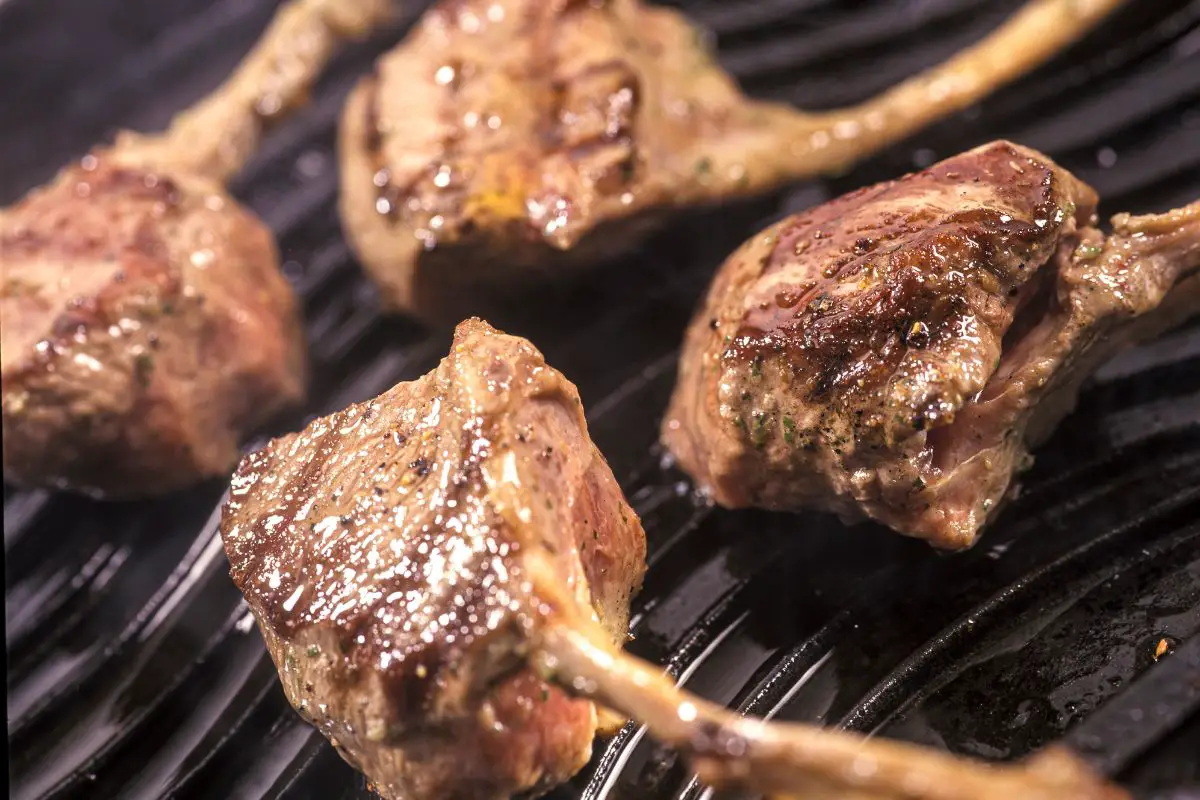
FAQ About the Norwegian Farikal Recipe
What is the Norwegian Farikal Recipe?
The Norwegian Farikal Recipe is a traditional dish from Norway that combines lamb meat and cabbage in a flavorful stew. It is simmered slowly to tenderize the meat and infuse the cabbage with rich flavors.
What makes Norwegian Farikal Recipe unique?
The unique aspect of the Norwegian Farikal Recipe lies in its simplicity and the combination of lamb meat and cabbage. The slow cooking process allows the flavors to meld together, resulting in a comforting and satisfying dish.
Can I make substitutions in the Norwegian Farikal Recipe?
Yes, you can make substitutions in the Norwegian Farikal Recipe based on your dietary preferences or restrictions. For example, you can substitute the lamb meat with plant-based alternatives for a vegan version or use gluten-free ingredients for a gluten-free option.
How long does it take to cook the Norwegian Farikal Recipe?
The cooking time for the Norwegian Farikal Recipe can vary but typically takes around 2 to 3 hours. This allows the lamb meat to become tender and the cabbage to soften while absorbing the flavors of the broth.
What are some serving suggestions for the Norwegian Farikal Recipe?
The Norwegian Farikal Recipe can be served as a main course alongside boiled potatoes or flatbread. You can also pair it with side dishes like pickled vegetables or a fresh salad to enhance the meal’s flavors and textures.
Final Thoughts
As a food blogger who has explored various recipes from around the world, the Norwegian Farikal Recipe stands out for its simplicity and unique combination of flavors. This traditional Norwegian dish brings together tender lamb meat and cabbage, simmered slowly to create a comforting stew. The dish’s versatility allows for personal adaptations and pairings with sides such as potatoes or flatbread.
From a nutritional standpoint, the Norwegian Farikal Recipe offers a good balance of protein from the lamb meat and essential vitamins from the cabbage. Overall, it’s a delightful and nourishing dish worth trying for its distinct flavors and potential health benefits.
Norwegian Farikal Recipe
Equipment
- Large, heavy-bottomed pot or Dutch oven: Used for simmering the Farikal.
- Knife: For cutting the lamb meat and cabbage.
- Cutting board: To provide a surface for slicing and chopping ingredients.
- Slotted spoon: Used for transferring the lamb and cabbage from the pot to the serving dish.
- Serving dish: For presenting the Norwegian Farikal.
- Paper towels: To pat dry the lamb meat.
- Measuring spoons: For accurately measuring salt and black pepper.
- Mandoline slicer (optional): For shredding the cabbage into thin strips.
Ingredients
- 3 pounds lamb such as lamb shoulder or lamb shanks
- 2 cabbage large heads
- 2 teaspoons salt
- 1 teaspoon black pepper
Instructions
Preparation and Cooking Time Estimates:
- Gather all ingredients and utensils.
Preparing the Lamb:
- Rinse the lamb meat under cold water and pat it dry with paper towels.
- Cut the lamb meat into chunks or pieces suitable for stewing.
- Season the lamb meat with salt and black pepper, ensuring an even coating.
- Allow the seasoned lamb meat to marinate for at least 30 minutes to enhance the flavors.
- While the lamb marinates, move on to preparing the cabbage.
Preparing the Cabbage:
- Remove any outer leaves from the cabbage heads and discard them.
- Cut the cabbage heads into quarters and remove the tough core.
- Slice the cabbage quarters into thin strips or shred them using a sharp knife or a mandoline slicer.
- Rinse the shredded cabbage thoroughly under cold water to remove any dirt or debris.
- Drain the cabbage well and set it aside for later use.
Layering the Lamb and Cabbage:
- In a large, heavy-bottomed pot or Dutch oven, start by layering half of the shredded cabbage at the bottom.
- Place the seasoned lamb meat on top of the cabbage layer, arranging it evenly.
- Add the remaining shredded cabbage on top of the lamb meat, creating a second layer.
- Press down lightly to compact the layers and ensure even cooking.
- Cover the pot with a lid and move on to the next step.
Simmering the Farikal:
- Place the pot on the stovetop over medium heat.
- Allow the lamb and cabbage mixture to come to a gentle simmer.
- Reduce the heat to low, maintaining a steady simmer throughout the cooking process.
- Cover the pot and let the Farikal simmer for approximately 2 to 3 hours, or until the lamb is tender and the cabbage has softened.
- Occasionally check and stir the Farikal gently to prevent sticking or burning.
- If necessary, add a small amount of water or broth to the pot to maintain the desired consistency.
Serving the Norwegian Farikal:
- Once the lamb is tender and the cabbage is cooked to your liking, remove the pot from the heat.
- Allow the Farikal to rest for a few minutes before serving.
- Using a slotted spoon, transfer the lamb and cabbage to a serving dish, allowing any excess liquid to drain off.
- Serve the Norwegian Farikal hot as a main course, accompanied by traditional sides like boiled potatoes or flatbread.
- Optionally, garnish the dish with fresh herbs such as parsley or dill for added flavor and visual appeal.
Enjoying the Norwegian Farikal:
- Gather your family and friends around the table to enjoy this hearty Norwegian dish.
- Share the rich flavors and comforting textures of the tender lamb and flavorful cabbage.
- Discuss the cultural significance of the Norwegian Farikal, its traditional preparation, and any personal experiences or memories associated with it.
- Appreciate the simplicity and nourishing qualities of this classic recipe.
- Indulge in each bite, savoring the delightful combination of flavors and the warmth it brings to your mealtime.
